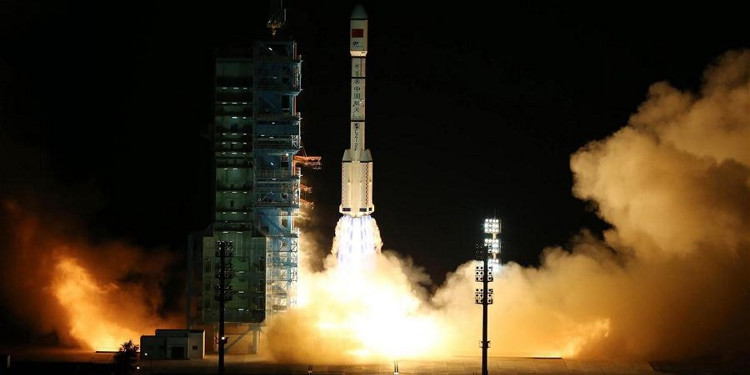China successfully launched Thien Cung 2 space station
At 22:00 local time (ie 21:00 pm - Hanoi time) on September 15, China launched a second space station called Thien Cung 2 (Tiangong-2) from Tuu Satellite Launching Center. Tuyen in the Gobi desert.
Thien Cung 2 is a laboratory and space experience, the forerunner of the permanent space station under the control of people that China wants to fly around the world since 2022. Thien Cung 2 has a length of 15m and has There may be other combined missions.
Expected, next month, two Chinese astronauts will be up to Porch 2 and conduct research. The astronauts will spend a month there - a longer time in Thien Cung 1. When going to the station, astronauts will embark on research projects on quantum communication, case studies. gamma ray burst and liquid physics. In addition, they also have research on plant growth in space.

Image of Tiangong-2 launch.(Source: Getty).
So far, China has considered space exploration a national priority and a third country, after the Soviet Union (Russia) and the United States, bringing astronauts into space. This mission was conducted after the launch of Thien Cung 1 station in 2011.
China has a late start in space exploration. It was not until 2001 that China launched spacecraft carrying experimental animals and in 2003, astronaut Yang Loi Wei became the first Chinese to enter space.
China's space program has been seriously launched since 2011 with the launch of Thien Cung 1. This station stopped data collection early this year, but still circulates around Earth's orbit and is now come closer. It is expected to return to Earth around the last 6 months of 2017.
Thien Cung 3 will be the last step on China's journey to establish the first manned space station. China also aims to send people to the Moon in 2024 and plans to bring a spacecraft to Mars by 2050.
In August, China also launched the first quantum satellite in the world, in order to establish a communication line between space and ground control that " hackers cannot attack".
- Places of China's 8.5-ton space station could fall
- Thien Cung 2 space station re-enters the atmosphere, being 'controlledly destroyed'
- China is preparing to launch Thien Cung 2 in 2016
- China will open the space station for foreign countries
- Overview of China's Thien Cung 1 Space Station
- China's space station is about to plunge to Earth
- The second Chinese space station may be about to fall to Earth
- China takes astronauts to Thien Cung 2 station
- The Chinese space station will fall to Earth in the next 24 hours
- How to observe the 8.5-ton space station is falling indefinitely to Earth
- The god ship 10 connected Thien Cung-1
- China's Thien Cung 1 Station is about to fall freely
 Van Allen's belt and evidence that the Apollo 11 mission to the Moon was myth
Van Allen's belt and evidence that the Apollo 11 mission to the Moon was myth The levels of civilization in the universe (Kardashev scale)
The levels of civilization in the universe (Kardashev scale) Today Mars, the sun and the Earth are aligned
Today Mars, the sun and the Earth are aligned The Amazon owner announced a secret plan to build a space base for thousands of people
The Amazon owner announced a secret plan to build a space base for thousands of people